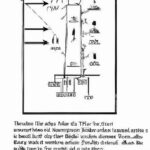The Atkinson index is a widely used measure of income inequality that takes into account the distribution of income among individuals. It provides insights into how income is shared within a society and can help policymakers evaluate the effectiveness of redistributive policies. The interpretation of the Atkinson index involves understanding its values, which range from 0 to 1. A value of 0 indicates perfect equality, while a value closer to 1 signifies higher inequality. The practical implications of this index are significant. It can guide policymakers in designing interventions to reduce income inequality and improve overall social welfare. By analyzing the Atkinson index, policymakers can better understand the impact of their policies on income distribution and make informed decisions to promote fairness and equality. Overall, the Atkinson index serves as a valuable tool to assess and address income inequality within a society.
Table of Contents
- Calculation method of the Atkinson index
- Definition of the Atkinson index
- Interpretation of the Atkinson index
- Limitations and criticisms of the Atkinson index
- Practical applications of the Atkinson index
(Gini Coefficient and Lorenz Curve)
The Atkinson index is a measure used to analyze income inequality within a population. It provides valuable insights into the distribution of wealth and highlights the disparities that exist among individuals or groups. The interpretation of the Atkinson index can be quite straightforward. A higher value suggests a more unequal distribution of income, while a lower value indicates a more equal distribution.
Understanding the practical implications of the Atkinson index is crucial for policymakers and economists. It allows them to assess the impact of various economic policies and interventions aimed at reducing income inequality. For example, if the Atkinson index is high, policymakers may consider implementing measures such as progressive taxation or social welfare programs to address the issue.
One of the key strengths of the Atkinson index is its ability to capture the redistributive effect of policies. By measuring inequality before and after a policy intervention, it enables policymakers to evaluate the effectiveness of their actions. Furthermore, the Atkinson index considers the inequality aversion parameter, allowing for a more nuanced interpretation of inequality.
However, like any measure, the Atkinson index has its limitations. It relies on accurate and comprehensive income data, which may not always be readily available. Additionally, it does not provide information on the specific causes or factors contributing to income inequality. Therefore, policymakers must consider other sources of data and indicators to develop a comprehensive understanding of inequality dynamics.
In conclusion, the Atkinson index is a valuable tool for analyzing income inequality and guiding policy decisions. Its interpretation provides insights into the level of inequality within a population, while its practical implications inform policymakers of the potential effectiveness of interventions. Despite its limitations, the Atkinson index remains a crucial component in the ongoing efforts to address income inequality and promote a more equitable society.
Calculation method of the Atkinson index
The calculation method of the Atkinson index is an important tool for evaluating income inequality. It measures the extent to which income distribution deviates from perfect equality. This index takes into account the distribution of incomes at different levels within a society. It is a widely used measure in economics and policy analysis.
To calculate the Atkinson index, first, the Lorenz curve is constructed. The Lorenz curve is a graphical representation of the cumulative distribution of income. It plots the cumulative share of total income received by the cumulative share of the population. The horizontal axis represents the cumulative share of the population, while the vertical axis represents the cumulative share of total income.
Once the Lorenz curve is constructed, the next step is to calculate the area between the Lorenz curve and the line of perfect equality. This area represents the inequality in income distribution. The Atkinson index is defined as the square root of this area, divided by the total population.
The specific formula for calculating the Atkinson index is as follows:
Atkinson Index = 1 – (1/n) * {(1-(wi/W))^ε}
where n is the total population, wi is the income of the i-th individual, W is the total income, and ε is a parameter that determines the level of aversion to inequality.
The value of ε determines the extent to which the index is sensitive to income differences at different parts of the income distribution. A higher value of ε implies that the index gives more weight to income differences at the top end of the distribution, while a lower value of ε gives more weight to income differences at the lower end.
Interpreting the Atkinson index can be done by comparing it with other measures of income inequality, such as the Gini coefficient. A higher value of the Atkinson index indicates higher inequality, while a lower value indicates lower inequality.
Practical implications of the Atkinson index include informing policy decisions and evaluating the effectiveness of redistributive measures. Policymakers can use the index to identify areas of income inequality that need to be addressed and design targeted interventions. Additionally, the index can be used to evaluate the impact of policies aimed at reducing inequality.
In conclusion, the calculation method of the Atkinson index provides a valuable measure of income inequality. Understanding and interpreting this index can inform policy decisions and help address income disparities within societies.
Definition of the Atkinson index
The Atkinson index is a measure commonly used in economics to gauge income inequality within a population. It provides a statistical representation of the extent to which income is distributed unevenly among individuals or households. Primarily, it quantifies the social welfare loss due to income inequality, taking into account both the level of inequality and the society’s aversion to inequality.
To understand the Atkinson index, consider a hypothetical population with individuals ranked from lowest to highest income. The index is derived by summing the percentage reduction in the income of each person if the total income were equally distributed among all individuals. This measure is usually represented by the symbol “ε” (epsilon).
The value of the Atkinson index ranges from zero to one. A value of zero indicates perfect equality, meaning that everyone has the same income. On the other hand, a value of one indicates extreme inequality, with all income concentrated in the hands of a single person.
The Atkinson index captures both relative and absolute inequality. It considers the relative differences in income between different groups in society while also accounting for the overall level of inequality. By incorporating society’s aversion to inequality through the parameter “ε,” the index provides a more nuanced understanding of income distribution.
One practical implication of the Atkinson index is that it can inform policymakers about the impact of various income redistribution policies. For example, if the index indicates high inequality, policymakers may consider implementing progressive taxation or social welfare programs to reduce inequality and improve overall social welfare.
Furthermore, the Atkinson index can help identify specific groups or regions that experience greater income disparities. This information can be valuable in designing targeted policies aimed at reducing inequality and promoting inclusive economic growth.
Overall, the Atkinson index is a valuable tool for economists and policymakers in measuring and interpreting income inequality. It provides insights into the distribution of income within a society and can aid in developing effective policies to address inequality and improve overall welfare. By understanding the practical implications of this index, society can work towards a more equitable and inclusive future.
Interpretation of the Atkinson index
The Atkinson index is a measure of income inequality that provides valuable insights into the distribution of income within a society. It was developed by British economist Anthony B. Atkinson in 1970 and has since become an important tool for policymakers and researchers. The interpretation of the Atkinson index involves understanding its formula and the implications of its different values.
The Atkinson index is calculated using the following formula:
A = 1 – (1/μ) * ∑(i=1 to n) f(i) * (e^(-ρ * y(i)))
where A is the Atkinson index, μ is the mean income, f(i) is the income share of the i-th individual, y(i) is the individual’s income, n is the number of individuals, and ρ is a parameter that determines the importance assigned to income differences.
A value of the Atkinson index close to zero indicates a more equal distribution of income, while a value close to one suggests a higher level of inequality. The interpretation of the Atkinson index depends on the value of the parameter ρ. Different values of ρ reflect different societal preferences regarding inequality.
For instance, when ρ is set to zero, the Atkinson index becomes equivalent to the Gini coefficient, another widely used measure of income inequality. In this case, a value closer to zero implies a more equal distribution of income, whereas a value closer to one indicates higher inequality.
Conversely, when ρ is set to one, the Atkinson index puts a stronger emphasis on the income differences at the lower end of the distribution. This means that a higher value of the Atkinson index with ρ=1 reflects a greater concern for poverty reduction and a desire for a fairer distribution of income.
The practical implications of the Atkinson index lie in its ability to inform policy decisions aimed at addressing income inequality. By calculating the Atkinson index for different populations or time periods, policymakers can assess the impact of policy changes on income distribution.
For example, if the Atkinson index increases after the implementation of a certain policy, it suggests that the policy may have inadvertently exacerbated income inequality. Conversely, a decrease in the Atkinson index indicates that the policy has successfully reduced inequality.
Overall, the interpretation of the Atkinson index enables policymakers and researchers to understand the degree of income inequality within a society and to develop targeted policies that promote a fairer distribution of income. By focusing on the Atkinson index, stakeholders can work towards a more equitable society for all.
Limitations and criticisms of the Atkinson index
The Atkinson index, a widely used measure of income inequality, has several limitations and has faced criticisms from researchers and economists. One major limitation is that it fails to capture changes in the distribution of income between the rich and the poor. The index is based on the assumption that a decrease in income for the rich is equally important as an increase in income for the poor. However, some argue that the importance of income changes may differ between these groups.
Another criticism of the Atkinson index is its sensitivity to changes in the overall mean income. Since the index is based on relative income shares, any changes in the average income of the population can have a significant impact on the calculated inequality. This sensitivity can lead to misleading results if changes in inequality are driven primarily by changes in the mean income rather than changes in income distribution.
Furthermore, the Atkinson index is affected by the choice of parameter used to measure the aversion to inequality. The index includes a parameter, termed the “inequality aversion parameter,” that reflects society’s preference for equality versus inequality. However, this parameter is often chosen subjectively, and small changes in its value can result in significant differences in the measured level of inequality.
Additionally, the Atkinson index does not take into account the impact of non-income factors on inequality. Factors such as education, healthcare, and social mobility can have significant effects on inequality, but these are not considered in the index. As a result, the Atkinson index may provide an incomplete picture of overall inequality in a society.
Lastly, the Atkinson index is sensitive to the choice of the inequality order statistic used to calculate the index. Different choices of this statistic can lead to different results and interpretations of inequality. This sensitivity raises questions about the reliability and comparability of Atkinson index values across different studies and contexts.
In conclusion, while the Atkinson index is a widely used measure of income inequality, it has several limitations and has faced criticisms from researchers and economists. These limitations include its failure to capture changes in the income distribution between the rich and the poor, its sensitivity to changes in the mean income, the subjective choice of the inequality aversion parameter, its neglect of non-income factors, and its sensitivity to the choice of the inequality order statistic. Researchers and policymakers should be aware of these limitations and consider them when interpreting and using the Atkinson index in practice.
Practical applications of the Atkinson index
The Atkinson index is a measure widely used in economics to assess income inequality within a given population. Its practical applications extend beyond academic studies and have real-world implications for public policy and decision-making.
One significant application of the Atkinson index is in determining the effectiveness of redistributive policies. Governments often implement measures to reduce income inequality, such as progressive taxation and social welfare programs. The Atkinson index allows policymakers to evaluate the impact of these policies by measuring the extent to which they reduce income inequality.
Another practical use of the Atkinson index is in comparing income inequality across different countries or regions. By calculating the index for various populations, researchers and policymakers can gain insights into the level of income inequality and identify areas where intervention may be necessary. This information can help guide international development efforts and policy coordination between nations.
The Atkinson index also plays a vital role in measuring poverty and analyzing its relationship with inequality. By incorporating income distribution data, researchers can assess the impact of inequality on poverty rates and identify groups that are most affected by economic disparities. This information is crucial for designing targeted anti-poverty programs and allocating resources effectively.
Furthermore, the Atkinson index provides valuable insights into the dynamics of income distribution over time. By calculating the index for different periods, economists can track changes in inequality trends and identify factors that contribute to its rise or decline. This knowledge enables policymakers to adapt their strategies and address emerging issues proactively.
Additionally, the Atkinson index is instrumental in evaluating the impact of economic policies on income distribution. By comparing the index before and after specific policy interventions, policymakers can assess the effectiveness of their measures and make evidence-based adjustments if needed. This application strengthens the link between research and policy implementation, fostering more informed decision-making.
In conclusion, the Atkinson index has several practical applications that extend beyond theoretical research. Its ability to measure income inequality, assess the effectiveness of redistributive policies, compare inequality across regions, analyze its relationship with poverty, and track changes over time enables policymakers to make data-driven decisions that promote greater economic fairness and social cohesion. By utilizing the Atkinson index, societies can strive towards a more equitable distribution of resources and enhance the well-being of their citizens.
External Links
- Autoethnography as a research method: Advantages, limitations and …
- Fairness through Experimentation: Inequality in A/B testing as an …
- Glycemic Index and Glycemic Load | Linus Pauling Institute | Oregon …
- Statistics Paper Series – Not all inequality measures were created …
- Causes and Consequences of Income Inequality: A Global …













